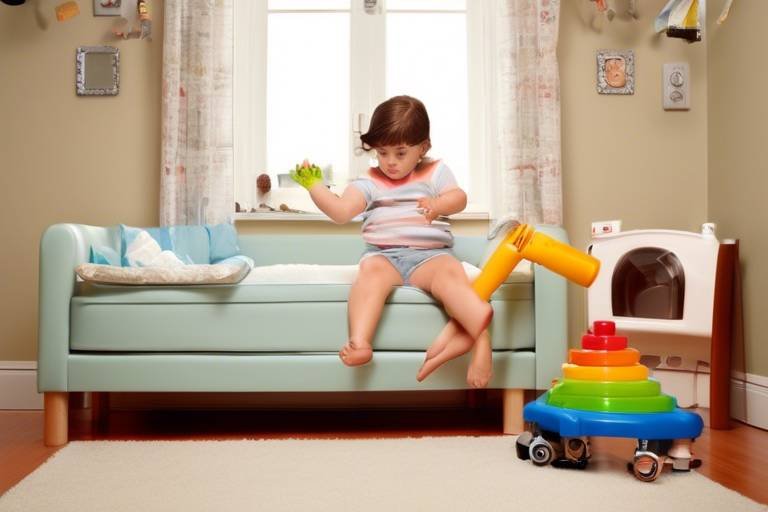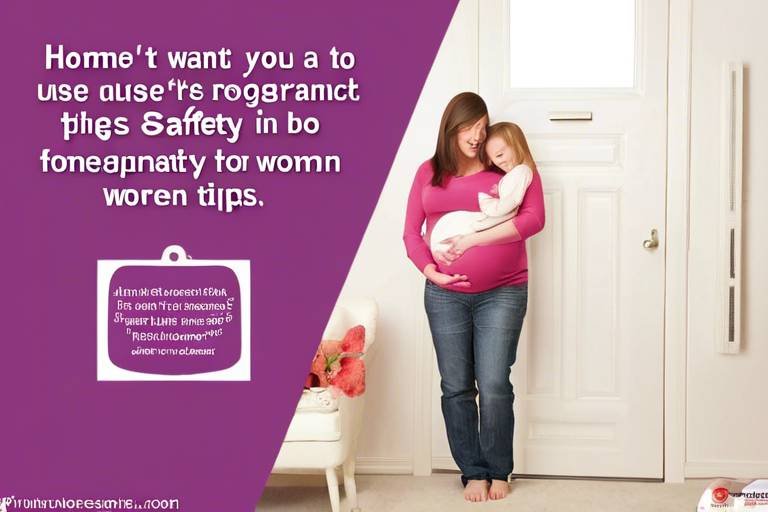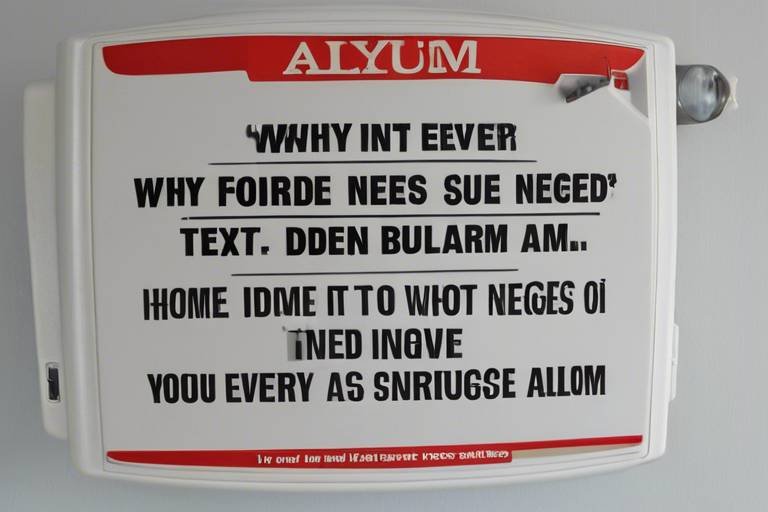Essential Home Safety Equipment for Emergencies
When it comes to keeping your family safe, being prepared for emergencies is paramount. Emergencies can strike without warning, and having the right safety equipment at your fingertips can make all the difference. Imagine a fire breaking out in your kitchen or a sudden medical emergency occurring—wouldn't you feel more secure knowing you have the necessary tools to handle the situation? In this article, we'll explore the essential home safety equipment every household should have, ensuring your family’s safety and enhancing your overall peace of mind.
First and foremost, let’s talk about fire extinguishers. These handy devices are crucial for tackling small fires before they escalate into something far more dangerous. Understanding the different types of fire extinguishers and how to use them correctly can literally save lives and property. A fire extinguisher can be your first line of defense, but it’s only effective if you know how to use it properly. So, make sure you read the instructions and get familiar with its operation.
Next on our list is smoke detectors. These little devices are your best friends when it comes to fire safety. They provide an early warning of fire hazards, giving you precious seconds to react. However, it’s not enough just to install them; regular maintenance and proper placement are key to ensuring their effectiveness. For instance, placing them in hallways and near sleeping areas can help alert you and your family in the event of a fire, allowing for a quicker escape.
Now, let’s not forget about carbon monoxide detectors. This silent killer is an invisible, odorless gas that can lead to poisoning if not detected in time. Installing carbon monoxide detectors in key areas of your home, such as bedrooms and hallways, is essential for your family’s safety. Knowing where to place these detectors is vital for optimal protection. Regular testing and battery replacements are also crucial to ensure they function correctly, providing you with peace of mind.
Another indispensable piece of safety equipment is a well-stocked first aid kit. Whether it’s a minor cut or a more serious injury, having the right supplies on hand can make a significant difference. Familiarizing yourself with the essential items in your first aid kit ensures you’re prepared for various situations. Items like adhesive bandages, antiseptic wipes, and gauze pads should be staples in your kit. Moreover, regularly checking and updating your first aid kit is vital to ensure it remains equipped for emergencies.
When power outages occur, having reliable emergency lighting is crucial. Flashlights and lanterns can prevent accidents and provide a sense of security in dark times. Understanding the pros and cons of battery-powered versus rechargeable lights can help you make informed choices for your emergency preparedness. Additionally, proper storage of emergency lighting equipment ensures quick access when needed, enhancing overall safety during emergencies.
Don’t overlook the importance of emergency blankets. These compact tools provide warmth and protection in crisis situations, making them essential for any emergency kit. Their versatility is impressive; they can also serve as insulation or temporary shelter. When choosing the right emergency blanket, consider factors like material, size, and insulation properties to ensure effective protection.
Investing in a home security system can greatly enhance your safety by deterring intruders and providing alerts during emergencies. Understanding the different types of security systems available helps you select the best fit for your needs. Additionally, exploring monitoring options, whether professional or DIY, allows you to customize your security approach to suit your lifestyle.
Keeping a list of emergency contacts readily available is another critical step in being prepared. This list should include local authorities and family members, ensuring quick communication during crises. Organizing this information in a clear format makes it easy to access when stress levels are high. You might also want to weigh the benefits of maintaining both digital and physical copies of your emergency contacts for maximum preparedness.
Finally, creating a home escape plan is vital for preparing your family for quick evacuation during emergencies. Regular drills reinforce familiarity with the plan, reducing panic when it matters most. Designing an effective escape route involves identifying exits and potential obstacles, ensuring everyone knows the safest paths. Regularly practicing this plan not only reinforces knowledge but also improves overall safety.
- What should I include in my first aid kit? Essential items include adhesive bandages, antiseptic wipes, gauze pads, and scissors.
- How often should I test my smoke detectors? It's recommended to test them monthly and replace the batteries at least once a year.
- Where should I place my carbon monoxide detectors? Install them in bedrooms and hallways for optimal safety.
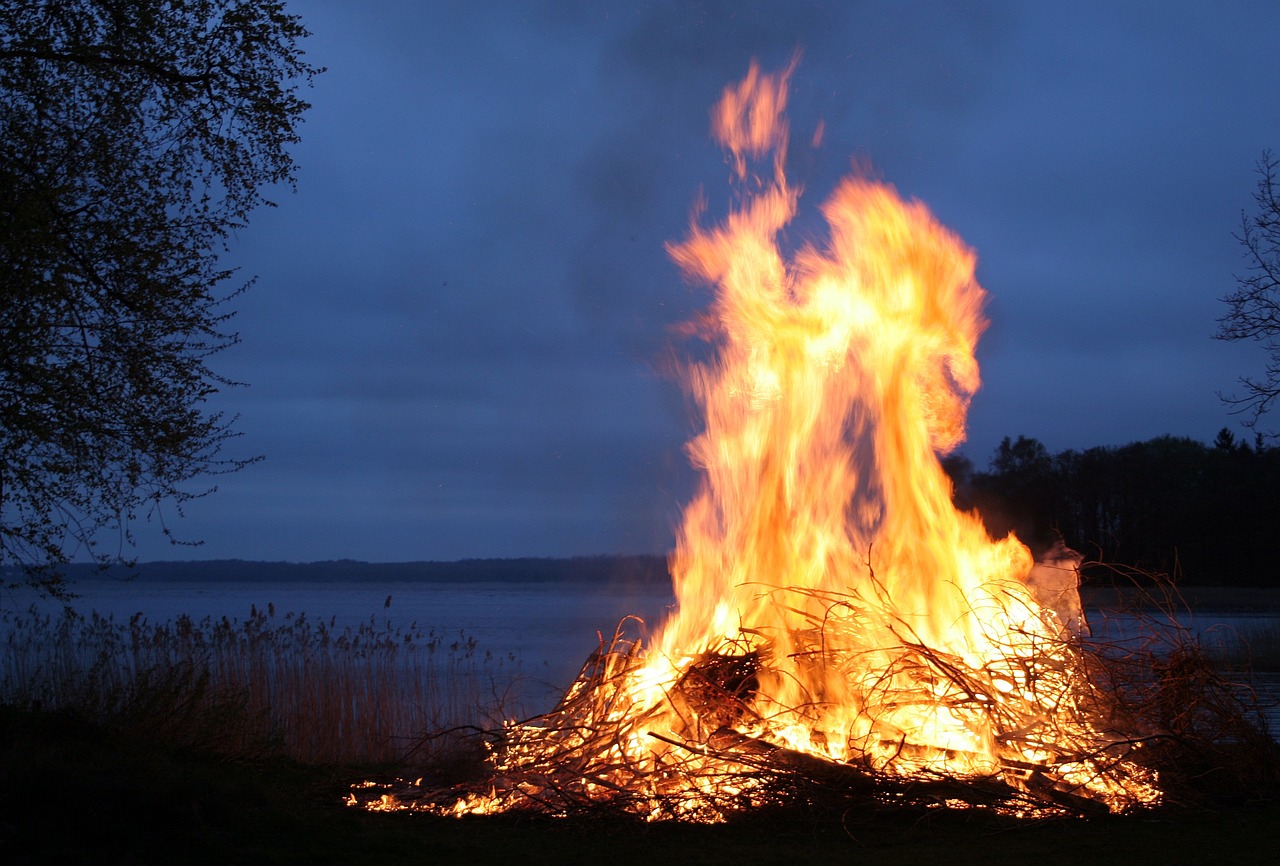
Fire Extinguishers
Fire extinguishers are not just a luxury; they are a necessity in every household. When a small fire breaks out, having a fire extinguisher nearby can mean the difference between a minor incident and a catastrophic disaster. Imagine the panic of seeing flames and realizing you have no means to fight them. That's why understanding the types of fire extinguishers available and knowing how to use them is crucial. There are various types of extinguishers, each designed for specific kinds of fires, including:
- Class A: For ordinary combustibles like wood, paper, and cloth.
- Class B: For flammable liquids such as gasoline, oil, and grease.
- Class C: For electrical fires.
- Class D: For combustible metals.
- Class K: Specifically for kitchen fires involving cooking oils and fats.
Knowing which type of extinguisher to use can save both lives and property. For instance, using a Class A extinguisher on a grease fire can exacerbate the situation, potentially leading to a larger inferno. It's essential to familiarize yourself with the PASS technique for using a fire extinguisher:
- P: Pull the pin.
- A: Aim low, pointing the nozzle at the base of the fire.
- S: Squeeze the handle to release the extinguishing agent.
- S: Sweep from side to side until the fire is out.
Regular maintenance of fire extinguishers is equally important. They should be inspected monthly to ensure they are fully charged and in working condition. Additionally, it’s recommended to have them professionally serviced every 1-6 years, depending on the type of extinguisher. Remember, a fire extinguisher is only effective if it is easily accessible. Place them in common areas, such as the kitchen, garage, and near exits, ensuring everyone in the household knows their locations.
In conclusion, fire extinguishers are a vital component of home safety equipment. They empower families to take action in the face of danger, potentially preventing significant damage and loss. So, take the time to select the right extinguishers, learn how to use them, and maintain them regularly. Your home—and your loved ones—will thank you for it.
Q: How often should I check my fire extinguisher?
A: It's advisable to check your fire extinguisher monthly for any signs of damage or loss of pressure. Additionally, have it professionally inspected every 1-6 years.
Q: Can I use a fire extinguisher on an electrical fire?
A: Yes, but only if it is a Class C fire extinguisher. Always ensure the electricity is turned off if possible before attempting to extinguish the fire.
Q: Where should I place fire extinguishers in my home?
A: Fire extinguishers should be placed in easily accessible locations such as the kitchen, garage, and near exits. Ensure that all family members know their locations.

Smoke Detectors
Smoke detectors are not just gadgets; they are your home’s frontline defense against the devastating effects of fire. Imagine waking up in the middle of the night to the sound of a piercing alarm, alerting you to a potential fire hazard. That’s the kind of peace of mind a smoke detector provides. These devices are designed to detect smoke as an indicator of fire, giving you those crucial extra seconds to escape or take action. But not all smoke detectors are created equal, and understanding their types and proper usage is essential for maximizing safety in your home.
There are primarily two types of smoke detectors: ionization detectors and photoelectric detectors. Ionization detectors are typically more responsive to flaming fires, while photoelectric detectors are better at sensing smoldering fires. Knowing the difference can help you choose the right combination for your household. Ideally, having both types installed can provide comprehensive coverage, ensuring that you’re prepared for any situation. In fact, many experts recommend using a combination of both to cover all bases.
Placement of smoke detectors is another critical factor that can greatly influence their effectiveness. They should be installed in every sleeping area, outside each separate sleeping area, and on every level of your home, including the basement. Here’s a quick guideline on placement:
| Location | Recommendation |
|---|---|
| Bedrooms | 1 detector in each room |
| Hallways | 1 detector outside each sleeping area |
| Living Areas | 1 detector on every level |
| Kitchen | At least 10 feet away from cooking appliances |
Regular maintenance is just as important as installation. It’s crucial to test your smoke detectors monthly to ensure they are functioning correctly. This simple act can be the difference between life and death. Additionally, replace the batteries at least once a year and the entire unit every 10 years. Keeping a maintenance schedule can help you stay on top of these tasks, ensuring your detectors are always ready to alert you in case of an emergency.
In summary, smoke detectors are essential safety devices that every home should have. They provide early warning, which can save lives and minimize property damage. By understanding the types of detectors available, knowing where to place them, and committing to regular maintenance, you can significantly enhance your home’s safety. So, take a moment to check your smoke detectors today—your family’s safety may depend on it!
- How often should I test my smoke detectors? It's recommended to test them monthly.
- How long do smoke detectors last? Most smoke detectors should be replaced every 10 years.
- Can I use just one type of smoke detector? While you can, using both ionization and photoelectric detectors is advisable for maximum safety.

Carbon Monoxide Detectors
Carbon monoxide detectors are not just a luxury; they are an absolute necessity for every household. This invisible, odorless gas can be a silent killer, and without the proper detection equipment, families can be at serious risk. Imagine waking up in the middle of the night, feeling dizzy and confused, only to realize that your home is filled with carbon monoxide. It's a nightmare scenario that can easily be avoided with the right precautions. By installing carbon monoxide detectors in strategic locations throughout your home, you can ensure early detection of this dangerous gas, giving you and your loved ones a fighting chance to escape.
When choosing carbon monoxide detectors, it’s essential to understand their functionality and types. There are two primary types: battery-operated and hardwired. Battery-operated detectors are versatile and can be placed anywhere, while hardwired models are connected directly to your home’s electrical system and often come with battery backups. Regardless of the type you choose, make sure to look for models that have been certified by a recognized testing laboratory, ensuring they meet safety standards.
Placement of these detectors is crucial. You should install them outside of sleeping areas and on every level of your home, including the basement. By doing so, you create a safety net that alerts you before the gas reaches dangerous levels. It’s also wise to install them near fuel-burning appliances, as these are common sources of carbon monoxide. Regular maintenance is just as important as installation. Testing your detectors monthly and replacing batteries at least once a year can make a world of difference in their effectiveness. Remember, a detector that doesn’t work is just as dangerous as having no detector at all!
In addition to regular testing, keeping an eye on the lifespan of your detectors is vital. Most detectors have a lifespan of about 5 to 7 years, and after that, they should be replaced. It's a good idea to mark the installation date on your calendar as a reminder. By staying proactive, you can ensure that your home remains a safe haven for your family.
In summary, carbon monoxide detectors are a small investment that can save lives. They provide peace of mind and an essential layer of protection against this silent threat. So, take the time to install them properly, maintain them regularly, and educate your family about the importance of these devices. After all, when it comes to safety, it’s always better to be safe than sorry!
- How often should I test my carbon monoxide detectors?
It’s recommended to test your detectors at least once a month to ensure they are functioning properly. - Where should I place my carbon monoxide detectors?
Install them outside sleeping areas and on every level of your home, especially near fuel-burning appliances. - How long do carbon monoxide detectors last?
Most detectors last between 5 to 7 years. Check the manufacturer's instructions for specific guidance. - What should I do if my carbon monoxide detector goes off?
Immediately evacuate the premises and call emergency services. Do not re-enter until it has been deemed safe.

Placement Guidelines
When it comes to ensuring the safety of your household, the placement of carbon monoxide detectors is absolutely crucial. These devices are your first line of defense against the silent threat of carbon monoxide, an odorless and colorless gas that can be deadly. To maximize their effectiveness, consider the following guidelines:
First and foremost, install carbon monoxide detectors in key areas of your home. The best locations typically include:
- Bedrooms: Since people spend a significant amount of time sleeping, placing detectors in or near bedrooms ensures that you’ll be alerted even in the dead of night.
- Hallways: Installing detectors in hallways allows for better air circulation detection, as carbon monoxide can travel through the air.
- Living Areas: Common areas where family members gather should also be equipped with detectors to provide early warnings.
- Near Fuel-Burning Appliances: If you have a furnace, water heater, or any gas-powered appliance, it's essential to place a detector within 15 feet of these devices.
Furthermore, avoid placing carbon monoxide detectors in areas where they can be affected by humidity or dust, such as bathrooms or kitchens. These factors can lead to false alarms or, worse, malfunctioning detectors. Instead, opt for locations that are away from windows, doors, and vents, as drafts can interfere with the detector’s ability to sense gas.
In addition, consider the height at which you mount your detectors. Carbon monoxide is slightly lighter than air, so it’s recommended to install them at least 5 feet above the floor for optimal performance. However, always refer to the manufacturer’s instructions, as different models may have specific guidelines.
Lastly, remember that regular maintenance is key. Test your detectors monthly and replace batteries at least once a year. If your detector is more than five years old, it’s time to replace it entirely. By following these placement guidelines, you can significantly enhance your home’s safety and protect your loved ones from the dangers of carbon monoxide.
Q1: How many carbon monoxide detectors do I need?
A: Ideally, you should have at least one detector on every level of your home, particularly near sleeping areas.
Q2: Can I use smoke detectors to detect carbon monoxide?
A: No, smoke detectors and carbon monoxide detectors are different. It is important to have both types for comprehensive safety.
Q3: What should I do if my carbon monoxide detector goes off?
A: Evacuate your home immediately and call emergency services. Do not re-enter until it's deemed safe.
Q4: How often should I replace my carbon monoxide detector?
A: Most detectors have a lifespan of 5 to 7 years. Check the manufacturer’s instructions for specific replacement guidelines.

Maintenance Tips
Maintaining your carbon monoxide detectors is crucial for ensuring they function correctly and provide the safety your family deserves. Regular maintenance not only prolongs the life of these devices but also enhances their reliability in detecting the silent threat of carbon monoxide. Here are some essential maintenance tips to keep in mind:
First and foremost, test your detectors monthly. This simple action can make a world of difference. Press the test button on your detector to ensure it’s working properly. If you hear the beep, you're in good shape! If not, it’s time to check the batteries or consider replacing the unit altogether. Remember, a detector that doesn’t work is just a piece of plastic on your wall.
Next, replace the batteries at least once a year. Even if your detector has a low-battery warning, it’s best to replace them annually to ensure they’re always ready to alert you. You can even align this with a memorable date, like your birthday or the start of a new season, to help you remember. Additionally, if your detector is hardwired, it may still have a backup battery that needs attention, so check that as well!
Another important aspect is cleaning your detectors regularly. Dust and dirt can accumulate on the sensors, impairing their ability to detect carbon monoxide. Use a vacuum cleaner with a soft brush attachment to gently remove dust from the outside of the unit. This will help maintain its sensitivity and functionality. If your detector has a removable cover, don’t forget to clean the inside as well, following the manufacturer's instructions.
Finally, keep track of the expiration date of your detectors. Most carbon monoxide detectors have a lifespan of about 5 to 7 years. Check the back of the unit for the manufacture date and mark your calendar for when it’s time to replace it. Staying proactive about your home safety equipment can prevent potential disasters. It’s like changing the oil in your car; you don’t want to wait until something goes wrong to take action!
By following these maintenance tips, you can ensure that your carbon monoxide detectors are always in top-notch condition, providing peace of mind for you and your family. Remember, safety is not just a one-time effort; it’s an ongoing responsibility!
- How often should I test my carbon monoxide detector? It is recommended to test your carbon monoxide detector at least once a month.
- When should I replace the batteries in my detector? You should replace the batteries at least once a year, or as soon as you hear the low-battery warning.
- How can I clean my carbon monoxide detector? Use a vacuum cleaner with a soft brush attachment to gently clean the outside of the unit. Refer to the manufacturer's instructions for cleaning the interior.
- What is the lifespan of a carbon monoxide detector? Most detectors last between 5 to 7 years. Always check the manufacturer's date and replace as necessary.

Types of Detectors
When it comes to protecting your home and loved ones, understanding the different types of detectors is essential. Smoke detectors and carbon monoxide detectors are the two primary categories, each serving a unique purpose in safeguarding your household. Let’s dive deeper into these life-saving devices and explore their distinct features and functionalities.
Smoke Detectors are designed to detect smoke and alert you to potential fire hazards. They come in various types, each utilizing different technologies to sense smoke:
- Ionic Smoke Detectors: These detectors use radioactive material to detect smoke particles. They are highly sensitive to fast-flaming fires but may take longer to respond to smoldering fires.
- Photoelectric Smoke Detectors: Utilizing a light beam, these detectors are excellent at sensing smoldering fires, making them a great choice for homes where cooking smoke might trigger alarms.
- Dual-Sensor Smoke Detectors: Combining both ionic and photoelectric technologies, these detectors provide comprehensive coverage against all types of fires.
On the other hand, Carbon Monoxide Detectors are crucial for detecting this colorless, odorless gas that can be fatal in high concentrations. They typically use one of two technologies:
- Electrochemical Sensors: These detectors measure the concentration of carbon monoxide in the air through chemical reactions, making them highly accurate.
- Metal Oxide Semiconductor Sensors: These detectors change resistance based on the presence of carbon monoxide, providing reliable alerts.
In addition to understanding the types, it’s crucial to consider the features that some detectors offer. For instance, many modern smoke and carbon monoxide detectors now come equipped with smart technology, allowing them to connect to your home Wi-Fi network. This feature enables alerts to be sent directly to your smartphone, ensuring you are informed even when you’re not at home.
Moreover, some detectors also include voice alerts, which can be particularly helpful during the chaos of an emergency, as they can provide clear instructions on what to do next. When selecting detectors for your home, think about what features will best suit your needs and lifestyle.
In conclusion, understanding the types of smoke and carbon monoxide detectors available is vital for ensuring your home is adequately protected. By choosing the right combination of detectors, you can create a safer environment for you and your family, ultimately giving you peace of mind.
Q: How often should I replace my smoke and carbon monoxide detectors?
A: It's recommended to replace smoke detectors every 10 years and carbon monoxide detectors every 5-7 years. Regular maintenance is crucial for optimal performance.
Q: Where should I install smoke and carbon monoxide detectors?
A: Install smoke detectors on every level of your home, especially near sleeping areas. Carbon monoxide detectors should be placed in key areas like bedrooms and hallways for maximum safety.
Q: How can I test if my detectors are working?
A: Most detectors have a test button that you can press to ensure they are functioning correctly. It's advisable to test them monthly and replace the batteries at least once a year.

First Aid Kits
A well-stocked first aid kit is not just a luxury; it’s an absolute necessity in any home. Imagine a situation where someone in your family gets a minor cut or sprains an ankle during a weekend adventure. Having a first aid kit on hand can transform a potentially stressful situation into a manageable one. It’s like having a safety net that allows you to act quickly and effectively, ensuring that minor injuries don’t turn into major problems.
When you think about it, a first aid kit is like your own personal medical assistant, ready to spring into action at a moment's notice. But what exactly should be included in this vital kit? Familiarizing yourself with the essential items can make a significant difference during emergencies. At a minimum, your first aid kit should contain:
- Adhesive bandages in various sizes
- Antiseptic wipes or solution
- Gauze pads and adhesive tape
- Antibiotic ointment
- Scissors and tweezers
- Pain relievers, such as ibuprofen or acetaminophen
- Emergency blanket
These items are just the tip of the iceberg. Depending on your family’s specific needs, you might want to add additional items, such as allergy medication or a digital thermometer. The key is to ensure that your kit is equipped to handle a variety of situations, from minor scrapes to more serious injuries.
But don’t stop there! Regular updates to your first aid kit are crucial. Just as you wouldn’t drive a car with an empty fuel tank, you shouldn’t rely on a first aid kit that hasn’t been checked in ages. Make it a habit to review the contents of your kit every six months. Check for expired medications, replace used items, and ensure everything is clean and organized. This simple practice can save precious time and effort when an emergency strikes.
In conclusion, a first aid kit is your frontline defense against unexpected injuries. By keeping it stocked and up-to-date, you’re not just preparing for emergencies; you’re also providing peace of mind for yourself and your loved ones. After all, in the grand tapestry of home safety, a well-prepared first aid kit is a thread that holds everything together.
Here are some common questions regarding first aid kits:
- What should I include in a first aid kit for kids? Consider adding child-friendly medications, bandages with fun designs, and items specific to your child's needs.
- How often should I check my first aid kit? It's recommended to check every six months to ensure all items are in good condition and not expired.
- Can I buy a pre-made first aid kit? Yes, many stores offer pre-made kits, but ensure they meet your specific needs and include essential items.
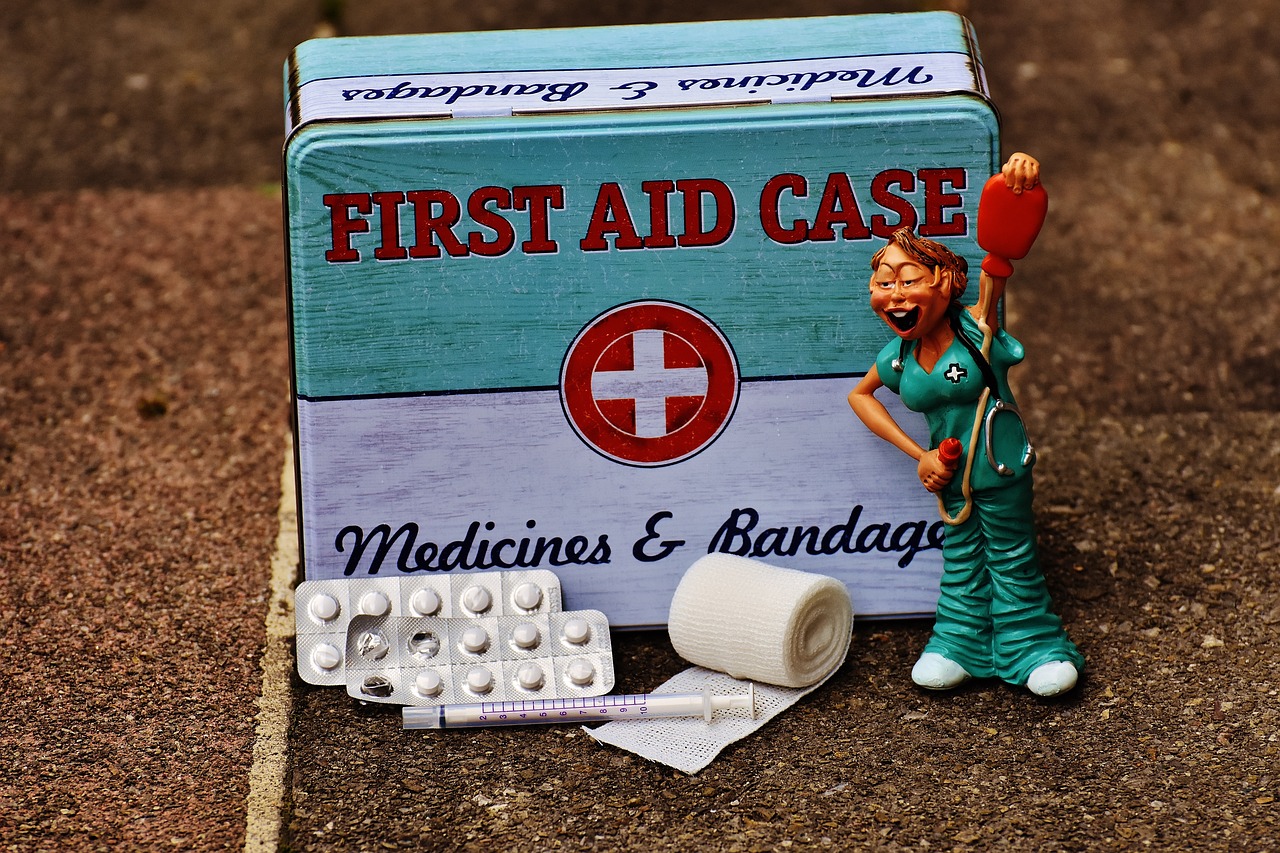
Essential Items
When it comes to emergencies, having a well-stocked first aid kit can be the difference between a minor incident and a major crisis. Imagine you’re at home, and someone accidentally cuts themselves while cooking. If you have the right supplies on hand, you can quickly address the injury and prevent it from worsening. But what exactly should you include in your first aid kit? Here are some that every household should have:
- Adhesive Bandages: These are your go-to for minor cuts and scrapes. They come in various sizes and shapes, making them versatile for different injuries.
- Antiseptic Wipes: Perfect for cleaning wounds, these wipes help prevent infection. Always opt for alcohol-free options if you have sensitive skin.
- Gauze Pads and Tape: For larger wounds, gauze pads can absorb blood and protect the area. Don't forget the tape to secure them in place!
- Antibiotic Ointment: A small tube of antibiotic ointment can help prevent infections in minor cuts and scrapes.
- Scissors and Tweezers: Scissors are handy for cutting gauze or tape, while tweezers can help remove splinters or debris from wounds.
- Disposable Gloves: These are crucial for keeping both you and the injured person safe from infections.
- Pain Relievers: Having over-the-counter options like ibuprofen or acetaminophen can help manage pain during emergencies.
- Emergency Blanket: This lightweight, compact item can help retain body heat in case of shock or cold exposure.
It’s not just about having these items; knowing how to use them is equally important. For instance, understanding how to properly clean a wound and apply a bandage can significantly reduce the risk of infection. Thus, consider taking a first aid course to familiarize yourself with basic techniques. Additionally, regularly check your first aid kit to ensure that all items are in good condition and within their expiration dates. This proactive approach guarantees that you’ll be ready for anything life throws your way, whether it’s a scraped knee or a more serious injury.
In creating your first aid kit, it’s also wise to tailor it to your family’s specific needs. For example, if someone in your household has allergies, include antihistamines. If you have children, consider adding pediatric supplies. The goal is to ensure that your kit is comprehensive and ready for a variety of situations.
What should I do if I use an item from my first aid kit? It's important to replace any items you use as soon as possible to keep your kit fully stocked. Regularly check your supplies and restock as needed.
How often should I check my first aid kit? Aim to review your first aid kit at least every six months. This ensures that all items are up to date and in good condition.
Can I customize my first aid kit? Absolutely! Tailoring your first aid kit to your family’s specific needs is encouraged. Include any medications or supplies that might be necessary for your unique situation.

Regular Updates
Keeping your first aid kit up to date is not just a good idea; it's essential for ensuring that you're prepared for any situation that may arise. Imagine reaching for a bandage only to realize it's expired or, worse yet, missing entirely! Regular updates to your first aid kit can mean the difference between a minor mishap and a serious emergency. So, how do you ensure your kit is always ready for action? Here are some key steps to consider:
- Schedule Regular Checks: Set a reminder every six months to go through your first aid kit. This simple task can help you catch expired items and restock supplies that have been used.
- Know Your Needs: Tailor your first aid kit to your family's specific needs. If someone has allergies, ensure you have the necessary medications. If you have young children, include items suited for their age.
- Stay Informed: Keep up with any new first aid guidelines or procedures. The more informed you are, the better equipped you'll be to handle emergencies.
Additionally, consider creating a checklist of the essential items that should always be in your first aid kit. This can include:
| Item | Purpose |
|---|---|
| Adhesive Bandages | For covering small cuts and abrasions. |
| Antiseptic Wipes | For cleaning wounds to prevent infection. |
| Gauze Pads | For larger wounds that need more coverage. |
| Medical Tape | To secure gauze or dressings in place. |
| Scissors | For cutting tape, gauze, or clothing if necessary. |
| Instant Cold Packs | For reducing swelling and pain. |
| First Aid Manual | For quick reference on how to handle various injuries. |
By regularly updating your first aid kit and ensuring it contains the right items, you'll be better prepared to handle minor injuries and emergencies. Remember, preparation is key! The more familiar you are with the contents of your kit, the more confident you'll feel when faced with an unexpected situation.
Q: How often should I check my first aid kit?
A: It's recommended to check your first aid kit every six months to ensure all items are in good condition and restock any used supplies.
Q: What items should be included in a basic first aid kit?
A: A basic first aid kit should include adhesive bandages, antiseptic wipes, gauze pads, medical tape, scissors, instant cold packs, and a first aid manual.
Q: Can I customize my first aid kit?
A: Absolutely! Tailor your kit to meet the specific needs of your family, including items for allergies or children's needs.
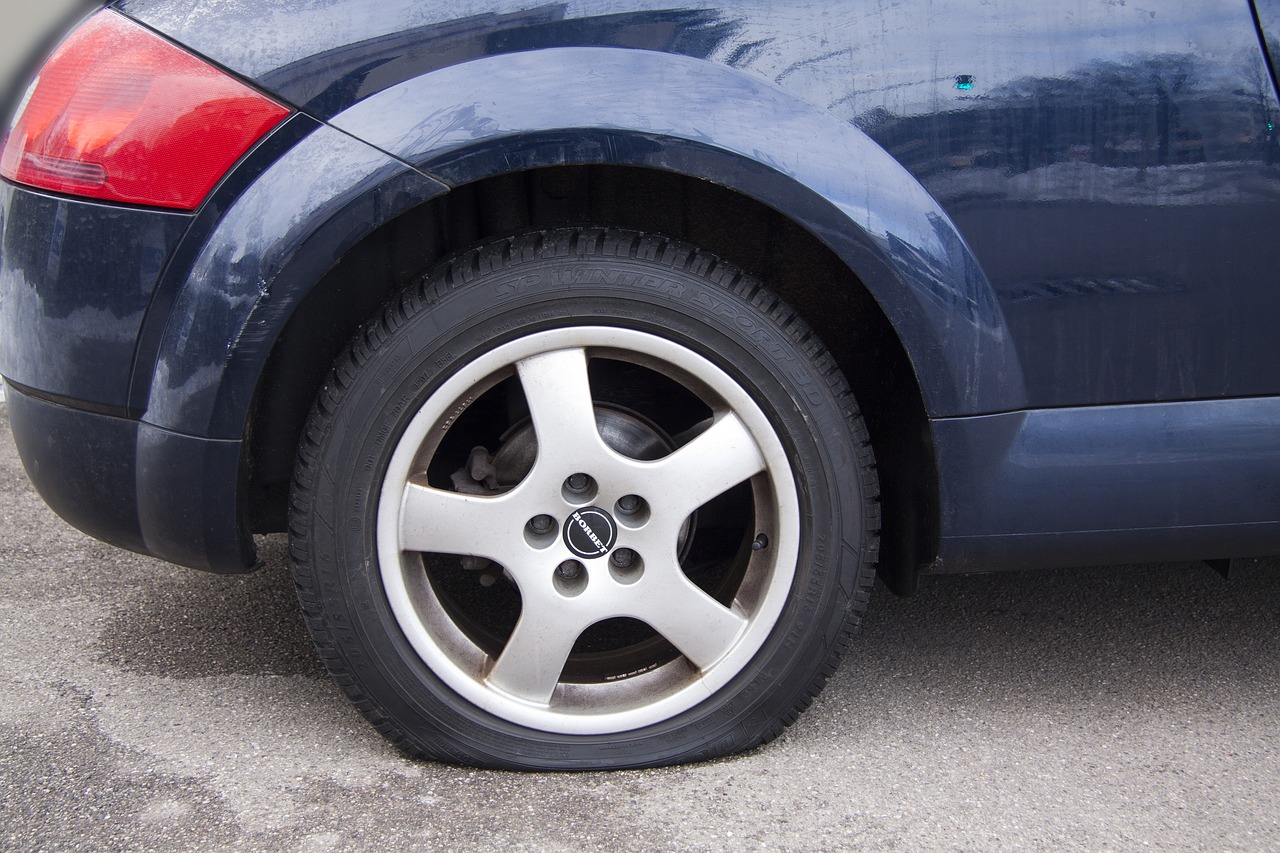
Emergency Lighting
Imagine this: a sudden power outage plunges your home into darkness. The flickering of candles and the dim glow of your phone's flashlight just won't cut it. That's where comes into play, acting as your beacon of safety during those unexpected moments. Whether it's a flashlight, lantern, or even emergency glow sticks, having reliable sources of light can make all the difference in preventing accidents and navigating your home safely.
When it comes to emergency lighting, you have two main options: battery-powered and rechargeable lights. Each type has its own set of advantages. Battery-powered lights are often more reliable during long outages since they can be stored away and used at any time. On the other hand, rechargeable lights can save you money on batteries in the long run and are environmentally friendly. However, they do need to be charged regularly to ensure they’re ready when you need them. So, ask yourself: do you prefer the convenience of rechargeables or the reliability of batteries?
To help you decide, consider the following table highlighting the pros and cons of each type:
| Type | Pros | Cons |
|---|---|---|
| Battery-Powered | Always ready to use, no need for charging | Requires regular battery replacement |
| Rechargeable | Cost-effective over time, eco-friendly | Needs to be charged regularly, may not work if power is out for too long |
Now that we’ve established the types, let’s talk about storage solutions. Proper storage of your emergency lighting equipment is critical. You want to make sure that when the lights go out, you can grab your flashlight or lantern without fumbling around in the dark. Designate a specific spot for your emergency lighting gear, preferably near exits or in central locations like your living room or kitchen. Keep them in easy-to-reach containers or hang them on hooks so they’re accessible when you need them the most.
In conclusion, investing in emergency lighting is not just a precaution; it’s a necessity. It provides peace of mind, ensuring that you and your family can navigate through darkness safely. So, take a moment to assess your current lighting situation. Are you prepared for the unexpected? If not, now's the time to act!
- What type of emergency lighting is best for my home? It depends on your needs. Battery-powered lights are great for reliability, while rechargeable lights can save money in the long run.
- How often should I check my emergency lighting? Regularly check your emergency lights every few months to ensure they are functioning properly and have fresh batteries if applicable.
- Can I use regular flashlights for emergencies? Yes, but it's advisable to have dedicated emergency lights that are easily accessible and specifically designed for prolonged use during outages.

Battery-Powered vs. Rechargeable
When it comes to emergency lighting, choosing between battery-powered and rechargeable options can feel like navigating a maze. Both types have their unique advantages, but understanding these differences is crucial for making an informed decision that suits your needs. Battery-powered lights are often the go-to choice for many households due to their simplicity and immediate availability. You simply pop in some batteries, and voilà! You have a reliable light source ready to go. However, the downside is that you need to keep an eye on those batteries, as they can run out when you least expect it. Imagine trying to find your way in the dark, only to discover your flashlight has gone dim because the batteries are dead. Not the best scenario, right?
On the other hand, rechargeable lights offer a sustainable solution that can save you money in the long run. These devices can be plugged in and charged, making them ready for action whenever the power goes out. The convenience of having a light that you can recharge means you won't be scrambling to find batteries during an emergency. However, this convenience comes with a caveat: if you forget to charge your rechargeable lights, you might find yourself in a similar predicament as with battery-powered ones. It's a bit like having a phone that’s great for communication but is useless when it’s out of juice!
To help you weigh your options, here’s a quick comparison table that outlines the key differences:
| Feature | Battery-Powered | Rechargeable |
|---|---|---|
| Initial Cost | Generally lower | Higher due to built-in battery |
| Long-Term Cost | Higher due to battery replacements | Lower, as you only pay for electricity |
| Readiness | Immediate use | Requires charging |
| Maintenance | Regular battery checks | Occasional charging |
Ultimately, the choice between battery-powered and rechargeable lights boils down to your lifestyle and preferences. If you prefer the hassle-free approach of grabbing a light and going, battery-powered options might be your best bet. However, if you’re looking for a more sustainable and cost-effective solution, rechargeable lights could be the way to go. Just remember to keep them charged! In the end, having a reliable source of light during emergencies is what truly matters, whether it’s powered by batteries or electricity.
1. How often should I replace the batteries in my battery-powered lights?
It’s a good practice to check the batteries every six months and replace them at least once a year, even if they still seem to work.
2. Can I use rechargeable lights during a power outage?
Yes! As long as they are fully charged before the outage, you can use them just like any other light source.
3. Are there any specific brands recommended for emergency lighting?
While many brands offer quality emergency lighting, it's best to look for those with good reviews and safety certifications.
4. How can I ensure my rechargeable lights stay charged?
Set a reminder to check and charge your lights regularly, especially before storm seasons or other potential emergencies.
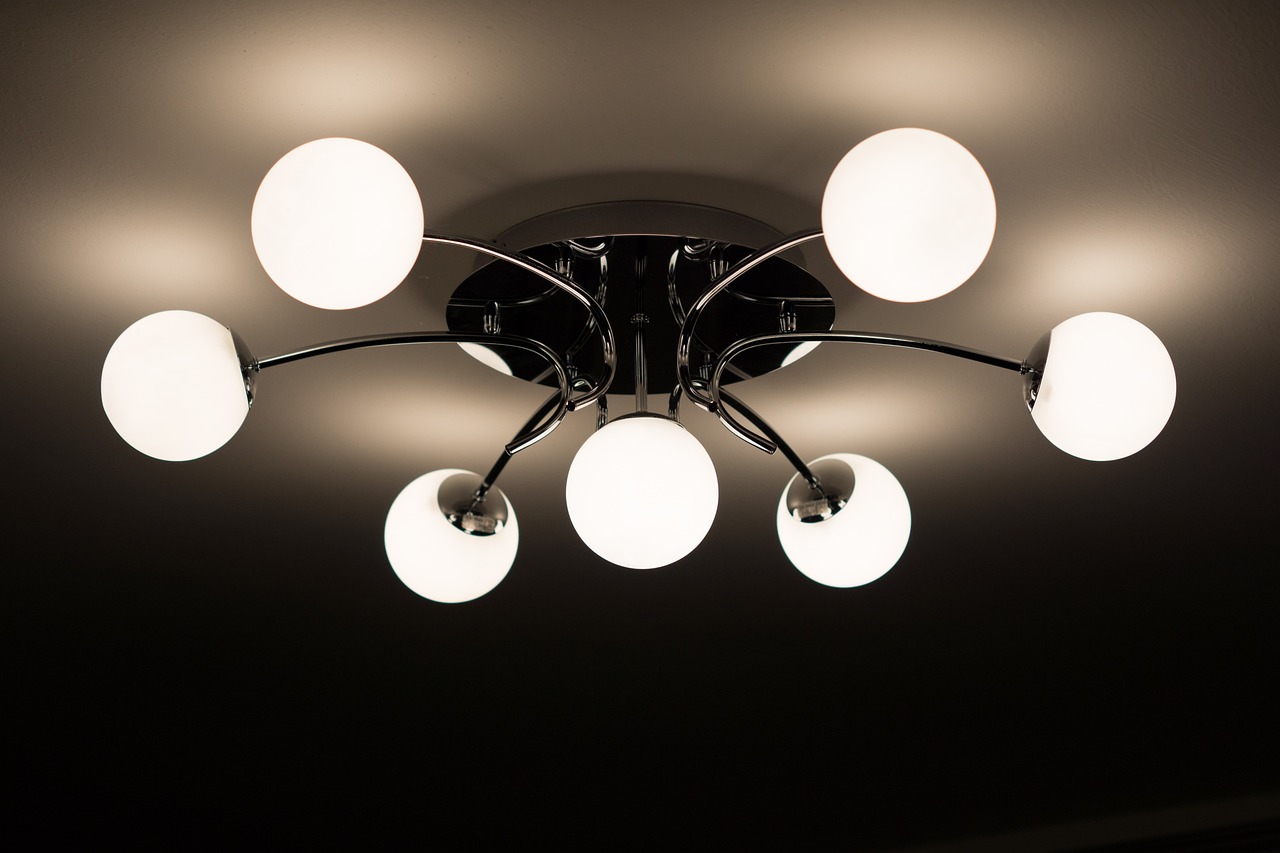
Storage Solutions
When it comes to emergency lighting, having reliable storage solutions is absolutely essential. Imagine finding yourself in the dark during a power outage—it's not just inconvenient, it's potentially dangerous! That's why organizing your emergency lighting equipment can make all the difference. You want to ensure that your flashlights, lanterns, and batteries are easily accessible when you need them the most.
One effective strategy for storing emergency lighting is to designate a specific location in your home. This could be a drawer in the kitchen, a shelf in the garage, or even a dedicated emergency kit. By keeping all your emergency lighting in one place, you can quickly grab what you need without rummaging through multiple rooms. Consider using clear plastic bins or labeled boxes to keep everything organized. Not only does this make it easier to find your gear, but it also allows you to quickly assess what you have on hand.
Another important aspect of storage is ensuring that your lighting equipment is in good working condition. Regularly check the batteries in your flashlights and lanterns, and replace them as needed. You might even want to create a simple checklist to keep track of your supplies. This way, you can ensure that everything is ready to go when an emergency strikes. Remember, having a reliable light source can prevent accidents and keep your family safe during unexpected situations.
Additionally, consider the environment where you store your emergency lighting. Extreme temperatures and humidity can damage batteries and equipment. Therefore, aim to keep your storage area in a cool, dry place. If you have rechargeable lights, ensure they are charged and stored according to the manufacturer's guidelines. This attention to detail will enhance the longevity of your emergency lighting solutions and ensure they function effectively when you need them the most.
In summary, effective storage solutions for emergency lighting are not just about having the right equipment; they also involve organization and maintenance. By creating a designated storage area, regularly checking your supplies, and considering environmental factors, you can ensure that your family is well-prepared for any situation. After all, in emergencies, every second counts, and being ready can make all the difference!
- What types of emergency lighting should I have? It's advisable to have a combination of flashlights, lanterns, and glow sticks to cover various scenarios.
- How often should I check my emergency lighting supplies? Regular checks every six months are recommended to ensure everything is in working order.
- What is the best way to store batteries? Store batteries in a cool, dry place, and keep them in their original packaging until needed.
- Can I use regular batteries for emergency lighting? Yes, but ensure they are high-quality and suited for the devices you are using.
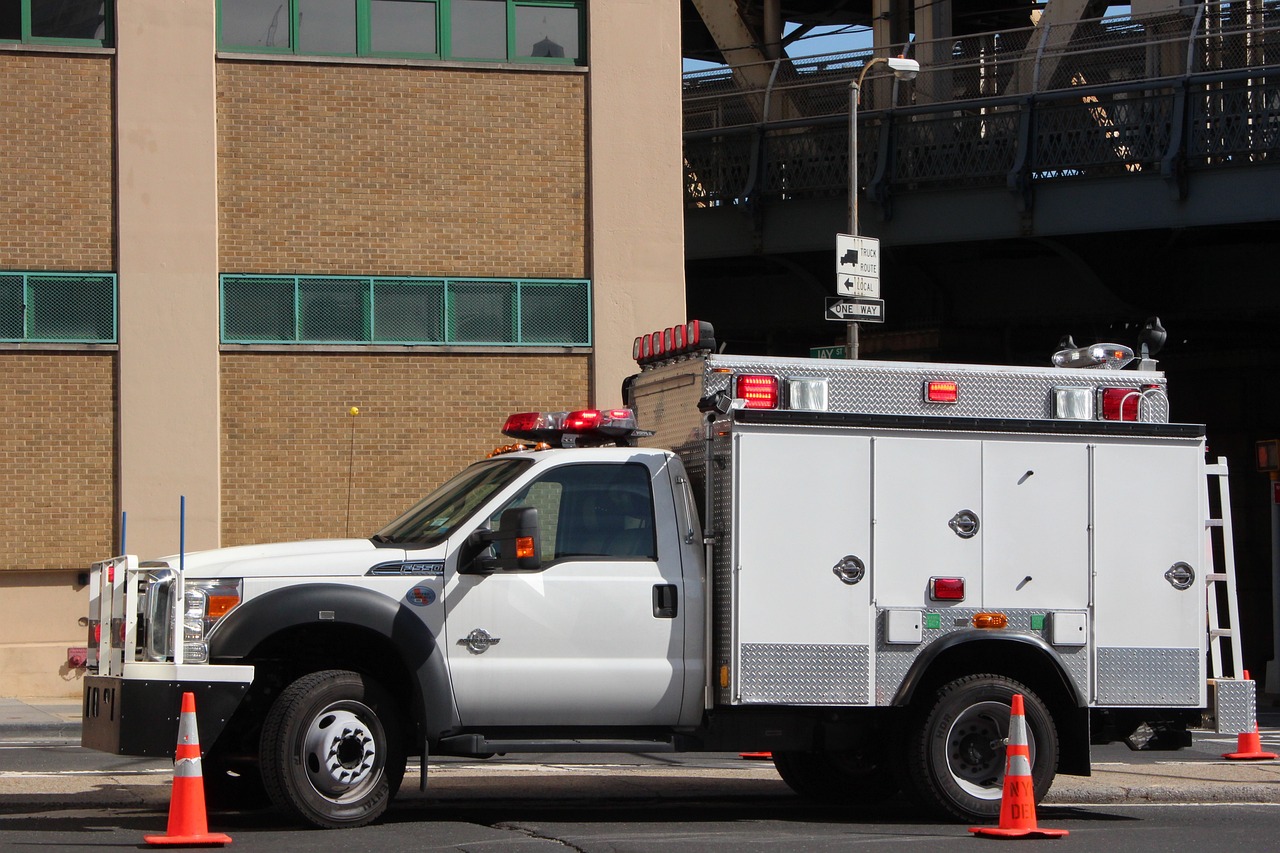
Emergency Blankets
are a vital component of any emergency preparedness kit. Often made from a thin layer of plastic or aluminum, these blankets are designed to provide warmth and protection in crisis situations. Their compact size makes them easy to store in your home, car, or backpack, ensuring that you can have them on hand whenever the need arises. Imagine being caught in a sudden storm or facing an unexpected drop in temperature; having an emergency blanket can make all the difference between comfort and distress.
These blankets are not just for warmth; they also serve multiple purposes. For instance, they can be used as a reflective surface to signal for help, or even as a makeshift shelter in outdoor emergencies. Their versatility is one of the reasons why they are often referred to as "space blankets," a nod to their original use by NASA to retain body heat in space missions. When you think about it, having an emergency blanket is like carrying a little piece of survival gear that can adapt to various situations.
When choosing the right emergency blanket, there are several factors to consider. The material is crucial; while most are made from Mylar, which is lightweight and reflective, some may prefer a thicker, more insulated option for colder climates. Additionally, size matters. A standard emergency blanket typically measures about 52 x 82 inches, but you can find options that cater to different needs, such as larger blankets for family use or smaller ones for individual carry. Understanding these aspects can help you make an informed decision that best suits your needs.
In conclusion, emergency blankets are an essential part of your safety arsenal. They provide warmth, versatility, and peace of mind during unforeseen events. Whether you're preparing for a camping trip or just ensuring your home is ready for emergencies, these blankets are a small investment that can yield significant benefits when you need them the most.
- What are emergency blankets made of? Emergency blankets are typically made from Mylar, a reflective plastic material that helps retain body heat.
- How effective are emergency blankets? They are very effective at keeping you warm by reflecting up to 90% of your body heat back to you.
- Can I reuse an emergency blanket? Yes, emergency blankets can be reused, although they may be less effective after multiple uses due to wear and tear.
- Where should I store my emergency blanket? Store your emergency blanket in a cool, dry place, and consider keeping one in your car, home, and emergency kit.

Uses Beyond Emergencies
Emergency blankets, often overlooked as mere safety equipment, have a plethora of uses beyond just crisis situations. These compact, lightweight sheets, typically made from a thin layer of plastic, are designed to reflect body heat, making them invaluable in survival scenarios. However, their versatility extends far beyond emergencies. For instance, they can be used as a thermal insulator, providing warmth during chilly nights while camping or hiking. Imagine wrapping yourself in one of these blankets under a starry sky, feeling snug and protected against the cold—it's like having a cozy hug from the universe!
Moreover, emergency blankets can serve as a makeshift shelter. If you're caught in unexpected rain or wind, they can be draped over branches or poles to create a quick cover, shielding you from the elements. Think of them as your portable safety net, ready to spring into action whenever the weather turns sour. Additionally, they can be used to signal for help; their shiny, reflective surface can catch the eye of rescuers from a distance, turning a simple blanket into a beacon of hope.
In the realm of outdoor activities, these blankets can also be used as ground covers. Whether you're having a picnic or setting up camp, laying an emergency blanket on the ground can keep you dry and clean. Not to mention, they can be handy for wrapping up food items to keep them warm or to insulate drinks, making them surprisingly functional in everyday scenarios.
Furthermore, if you’re ever in a bind and need to keep your car warm during a breakdown in winter, an emergency blanket can be your best friend. Just imagine sitting in your car, with the engine off, and feeling the chill creeping in. By wrapping yourself in an emergency blanket, you can conserve heat until help arrives. This simple tool can transform a potentially uncomfortable situation into a more manageable one.
In essence, emergency blankets are not just for emergencies; they are multi-functional tools that can enhance your outdoor experiences, provide comfort in unexpected situations, and even offer a bit of fun during a camping trip. So, the next time you pack for an adventure, don’t forget to include one of these handy blankets. They might just be the unsung hero of your outdoor gear!
Q: Can emergency blankets be reused?
A: Yes, emergency blankets can be reused multiple times as long as they are not damaged. Just make sure to store them properly to maintain their effectiveness.
Q: Are emergency blankets waterproof?
A: While emergency blankets are water-resistant, they are not completely waterproof. They can provide some protection against light rain but are not suitable for heavy downpours.
Q: How do I clean an emergency blanket?
A: It’s best to wipe them down with a damp cloth. Avoid using harsh chemicals or machine washing, as this can damage the material.
Q: Where should I store my emergency blanket?
A: Store your emergency blanket in a cool, dry place, ideally in your emergency kit, car, or camping gear, so it’s readily accessible when needed.

How to Choose
Choosing the right emergency blanket can be a daunting task, especially with the myriad of options available on the market. To make an informed decision, it's essential to consider a few key factors that can significantly impact the effectiveness of the blanket in a crisis. First and foremost, material plays a crucial role. Most emergency blankets are made from lightweight, reflective materials like Mylar, which are designed to trap body heat and provide insulation. However, there are also blankets made from more durable fabrics that may offer better protection against the elements.
Next, think about the size of the blanket. Emergency blankets come in various sizes, from those that can cover just one person to larger options that can accommodate multiple individuals. If you're planning for family emergencies, it might be wise to invest in larger blankets that can be shared. Additionally, consider the insulation properties of the blanket. Some blankets are designed for extreme conditions, while others are more suited for mild weather. Understanding the climate you live in can guide you in selecting the most appropriate emergency blanket.
Another aspect to keep in mind is the weight and portability of the blanket. If you plan to take your emergency supplies on camping trips or keep them in your car, a lightweight and compact option is ideal. Many emergency blankets can be easily folded or rolled up, making them convenient for storage. Furthermore, think about the durability of the blanket. Some may be prone to tearing, while others are designed to withstand rough handling. Investing in a more robust option can ensure that your blanket remains functional when you need it the most.
Finally, always check for user reviews and ratings before making a purchase. Customer feedback can provide valuable insights into the performance and reliability of the blanket during real-life emergencies. By considering these factors—material, size, insulation properties, weight, durability, and user reviews—you can confidently choose an emergency blanket that meets your needs and enhances your preparedness for any situation.
To further assist you in your journey towards home safety, here are some frequently asked questions about emergency equipment:
- What is the best place to store emergency blankets? It's best to keep them in easily accessible locations, such as your car, home emergency kit, or camping gear.
- How often should I check my emergency supplies? Regularly review your emergency supplies at least twice a year to ensure everything is up to date and functional.
- Can I use an emergency blanket for camping? Absolutely! Emergency blankets are lightweight and compact, making them great for camping trips.
- Are all smoke detectors the same? No, there are different types of smoke detectors, including ionization and photoelectric, each with its strengths and weaknesses.

Home Security Systems
Investing in a home security system is one of the best decisions you can make to enhance the safety of your household. With the rise in home invasions and other emergencies, having a reliable security system not only provides peace of mind but also acts as a deterrent against potential intruders. Imagine coming home after a long day, knowing that your home is protected by an advanced security system; it’s a comforting thought, isn’t it?
When choosing a security system, you’ll find that there are various options available, each tailored to meet different needs. Some systems come equipped with video surveillance, allowing you to monitor your property in real-time through your smartphone. Others might include motion sensors that alert you when someone enters your home unexpectedly. It’s important to understand the different types of systems available so you can select the one that fits your lifestyle and budget.
Here’s a quick breakdown of the most common types of home security systems:
| Type of System | Description | Pros | Cons |
|---|---|---|---|
| Monitored Systems | Professionally monitored by a security company. | 24/7 monitoring, quick response to emergencies. | Monthly fees, potential contracts. |
| Unmonitored Systems | Alerts you directly without professional monitoring. | No monthly fees, control over alerts. | Less immediate response to emergencies. |
| Smart Home Systems | Integrates with other smart devices in your home. | Convenience, remote monitoring, automation. | Complex setup, reliance on Wi-Fi. |
Another key aspect to consider is the monitoring options. You can choose between professional monitoring, where a team watches over your home 24/7, or you might prefer a DIY approach, where you manage alerts and responses yourself. Each option has its unique advantages and drawbacks, so it’s essential to weigh them based on your specific needs. For instance, a professional service may provide faster emergency responses, while a DIY system can save you money in the long run.
Furthermore, the integration of modern technology has transformed home security into a more user-friendly experience. Many systems now offer mobile apps that allow you to control your security features from anywhere. You can lock doors, view camera feeds, and even receive alerts about unusual activity right from your phone. Isn’t it amazing how technology can empower us to take control of our safety?
In addition to traditional security measures, consider enhancing your home’s security with smart devices like video doorbells and smart locks. These devices not only provide an added layer of protection but also allow you to interact with visitors remotely, giving you a sense of control over who enters your home. Imagine being able to greet a delivery person while you’re still at work; it’s convenience and security rolled into one!
Ultimately, choosing the right home security system is about understanding your unique needs and preferences. Whether you opt for a high-tech solution or a more traditional approach, the important thing is to take that first step towards securing your home and loved ones. Remember, a secure home is a happy home!
- What is the best type of home security system? The best type depends on your specific needs, budget, and preferences. Consider factors like monitoring options and technology integration.
- How much does a home security system cost? Costs vary widely based on the system and features you choose. You can find options ranging from basic systems to comprehensive smart-home solutions.
- Are DIY security systems effective? Yes, many DIY systems are effective and can be tailored to your specific needs, but they may require more vigilance on your part.

Types of Systems
When it comes to home security systems, there are several types to consider, each designed to meet different needs and preferences. Understanding these systems can help you make an informed choice that best suits your household. The most common types include:
- Monitored Security Systems: These systems are connected to a central monitoring station that is staffed 24/7. If an alarm is triggered, the monitoring center will immediately notify the authorities. This type of system provides peace of mind, knowing that help is just a call away, even when you're not home.
- Unmonitored Security Systems: Unlike monitored systems, these rely on local alarms that sound when triggered. While they can deter intruders, they do not provide immediate assistance from authorities. This option is often more budget-friendly but may not offer the same level of security.
- Wireless Security Systems: These systems use Wi-Fi or cellular networks to communicate, eliminating the need for extensive wiring. They are easy to install and can be expanded with additional devices. This flexibility makes them a popular choice for many homeowners.
- Wired Security Systems: Traditional wired systems require extensive installation, as they are hardwired into the home's electrical system. While they can be more reliable in some cases, they are less flexible and can be more challenging to install.
- Smart Home Security Systems: These systems integrate with smart home technology, allowing you to control your security features via smartphone apps. They often include features like remote monitoring, smart locks, and video surveillance, providing a comprehensive security solution.
Moreover, some systems come with additional features that enhance security, such as video surveillance, motion detectors, and smart doorbells. These options allow you to keep an eye on your property from anywhere, adding an extra layer of security. When selecting a home security system, consider factors like your budget, the size of your home, and the specific security needs of your family. It's essential to evaluate what level of monitoring and features you really require to ensure your home is well-protected.
In conclusion, the right security system can significantly enhance your home’s safety. By understanding the various types available, you can choose a system that not only fits your lifestyle but also provides the peace of mind you deserve.
Here are some common questions homeowners have regarding home security systems:
- How much does a home security system cost? The cost can vary widely based on the type of system, features, and installation. Basic systems may start around $200, while comprehensive smart systems can range into the thousands.
- Do I need a professional installation? While many systems offer DIY installation, professional installation can ensure that everything is set up correctly and functioning properly.
- Can I monitor my home security system remotely? Yes, many modern systems offer mobile apps that allow you to monitor your home security in real time from anywhere.
- What should I do if my alarm goes off? If your alarm is triggered, stay calm and immediately check your home for any signs of intrusion. If you suspect a break-in, contact the authorities before entering.
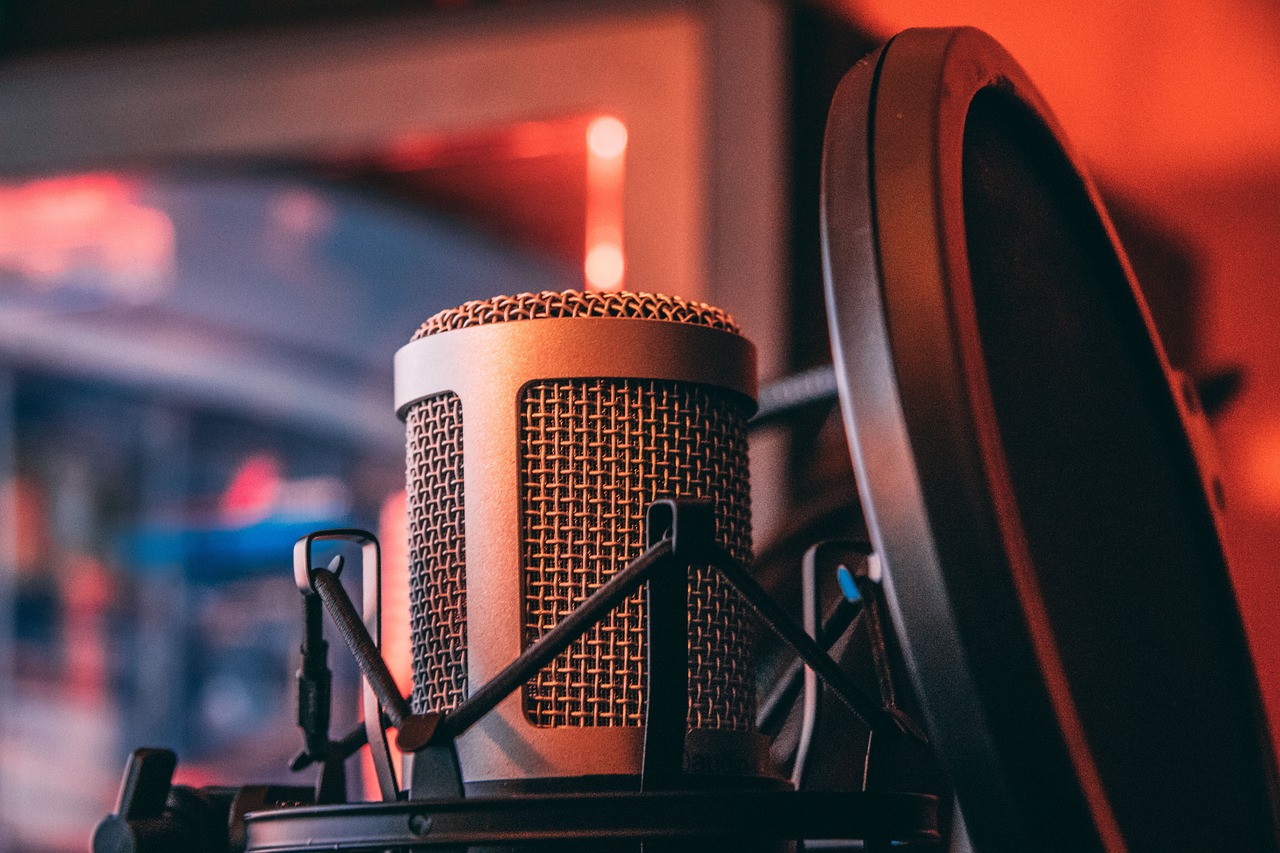
Monitoring Options
When it comes to safeguarding your home, understanding the various available is essential. Home security systems can be tailored to fit your specific needs, providing peace of mind whether you're at home or away. One of the primary choices homeowners face is between professional monitoring and self-monitoring.
With professional monitoring, your system is linked to a monitoring center that operates 24/7. In case of an alarm, trained personnel will respond immediately, contacting local authorities if necessary. This option is particularly beneficial for those who travel frequently or have busy schedules, as it ensures that someone is always watching over your home. However, this service often comes with a monthly fee, which can vary based on the level of service and features included.
On the other hand, self-monitoring allows you to take control of your security system. Many modern systems come equipped with mobile apps that send alerts directly to your smartphone. This means you can monitor your home in real-time, receiving notifications about suspicious activity or alarms triggered. While this option can save you money on monthly fees, it does require you to be vigilant and responsive, which may not be feasible for everyone.
Another consideration is the integration of smart home technology. Many security systems now offer compatibility with smart devices, allowing you to manage your security through voice commands or mobile applications. This can create a more cohesive home automation experience, where your security system works in tandem with other devices like lights and thermostats. Here’s a quick comparison of the two main monitoring options:
| Monitoring Type | Pros | Cons |
|---|---|---|
| Professional Monitoring |
|
|
| Self-Monitoring |
|
|
Ultimately, the choice between professional and self-monitoring comes down to your lifestyle and preferences. Some homeowners may even opt for a hybrid approach, using professional monitoring for certain aspects of their security while maintaining self-monitoring for others. Whichever route you choose, ensuring that your home is monitored effectively is a crucial step in enhancing your overall safety.
Q: What is the best type of home security monitoring?
A: The best type depends on your needs. Professional monitoring offers constant surveillance, while self-monitoring gives you control and can be cost-effective.
Q: How much does professional monitoring typically cost?
A: Costs can range from $15 to $50 per month, depending on the services provided and the security company.
Q: Can I integrate my security system with smart home devices?
A: Yes, many modern security systems are designed to work with smart home technology, allowing for a seamless experience.
Q: What should I do if I receive an alert while I'm away?
A: If you have professional monitoring, they will handle the situation. If self-monitoring, assess the alert through your app and decide whether to contact authorities.

Emergency Contact Information
Keeping a list of emergency contacts readily available is crucial for ensuring quick communication during crises. Imagine facing an emergency situation—whether it's a fire, medical issue, or a natural disaster. The last thing you want is to scramble through your phone or search for that elusive piece of paper with important numbers. Having a well-organized list can mean the difference between a swift response and chaos.
Your emergency contact list should include not only local authorities such as the police, fire department, and medical services but also family members and close friends who can provide support. It's wise to consider including contacts for nearby neighbors who might be able to help in a pinch. Here’s a quick breakdown of what to include:
- Local Police Department: Always the first call in emergencies.
- Fire Department: Essential for fire-related incidents.
- Medical Services: Ambulance or hospital contacts.
- Family Members: Immediate family and trusted friends.
- Neighbors: Those who live nearby can be invaluable.
Organizing this information in a clear format makes it easy to access during stressful situations. You might want to create a simple table or a document that can be printed and placed in a visible location, like on your refrigerator or inside your first aid kit. Here’s a sample format you could use:
| Contact Name | Phone Number | Relation |
|---|---|---|
| John Doe | (123) 456-7890 | Father |
| Jane Smith | (987) 654-3210 | Neighbor |
| Local Police | (555) 012-3456 | Emergency Service |
In today's digital age, you might be tempted to rely solely on your smartphone for this information. However, it’s essential to weigh the benefits of digital versus physical copies. Digital copies can be convenient and accessible, but they can also be lost due to battery failure or technical issues. On the other hand, physical copies ensure that you have the information at hand, even when technology fails. Therefore, consider keeping both versions handy.
Finally, make sure to regularly update your emergency contact list. Life changes, people move, and relationships evolve. Keeping your list current ensures that you have the right contacts when you need them most. So, take a moment now to jot down those crucial numbers, and breathe a little easier knowing that you’re prepared for whatever life throws your way!

How to Organize
Organizing your emergency contact information is not just a good idea; it’s a vital step in ensuring that you and your family can respond effectively during a crisis. Imagine being in a stressful situation where every second counts, and you can’t find that crucial number for emergency services or a family member. To avoid this chaos, follow a systematic approach to keep your contact information at your fingertips.
Start by creating a dedicated document or a physical card that lists all essential contacts. This should include local emergency services, family members, close friends, and any other important contacts who can assist in a crisis. Consider categorizing these contacts for easy reference. For example, you might have sections for:
- Emergency Services: Police, Fire Department, Ambulance
- Family Contacts: Immediate family members and relatives
- Neighbors: Trusted neighbors who can help
- Medical Contacts: Doctors, hospitals, and poison control
Once your list is created, it's essential to keep it accessible. You might want to store a physical copy in a prominent location, like on the fridge or in a drawer near the phone. Additionally, having a digital version on your phone or a cloud service can be a lifesaver. Just ensure that this digital copy is password-protected to keep your information secure.
Regularly update your contact list to reflect any changes, such as new phone numbers or additional contacts. A good practice is to review and refresh this list every few months, or after any significant life changes like moving or changes in family structure. This way, you can ensure that your emergency contact information is always current and reliable.
Lastly, consider involving your family in this organization process. Teach them where to find the contact list and how to use it. This not only empowers them but also ensures that everyone knows what to do in an emergency, thereby enhancing your overall preparedness.
Q: What should I include in my emergency contact list?
A: Your emergency contact list should include local emergency services, family members, trusted friends, neighbors, and medical contacts like doctors and hospitals.
Q: How often should I update my emergency contact information?
A: It’s advisable to review and update your emergency contact information every few months or after any significant life changes.
Q: Where should I keep my emergency contact list?
A: Keep a physical copy in a prominent location, like on the fridge, and have a digital version on your phone or a secure cloud service.
Q: How can I ensure my family knows how to access this information?
A: Involve your family in the organization process and teach them where to find the contact list and how to use it effectively.

Digital vs. Physical Copies
When it comes to keeping your emergency contact information accessible, the debate between digital and physical copies is more relevant than ever. Each option has its own set of advantages and disadvantages, and understanding these can help you make the best choice for your household. On one hand, digital copies are incredibly convenient. You can store them on your smartphone, tablet, or computer, making them easily accessible no matter where you are. Imagine being in a situation where you need to contact emergency services, and you can pull out your phone to quickly access the necessary numbers. It's a lifesaver!
However, relying solely on digital copies can also have its pitfalls. What if your device runs out of battery, or worse, gets damaged or lost? In such instances, having a physical copy can be invaluable. A printed list of emergency contacts can be kept in a designated location, such as on the fridge or in a drawer, ensuring that it’s always within reach when you need it most. This redundancy is crucial for maintaining peace of mind, especially during emergencies when stress levels are high.
To strike a balance, many people opt for a hybrid approach. This involves keeping both digital and physical copies of their emergency contact information. You can use your smartphone to quickly access contacts while also having a printed version for backup. This way, you’re covered in almost any situation. Consider using a table to organize your contacts effectively:
| Contact Type | Name | Phone Number |
|---|---|---|
| Local Authorities | Police Department | (555) 123-4567 |
| Family Member | Mom | (555) 234-5678 |
| Family Member | Dad | (555) 345-6789 |
| Emergency Services | Fire Department | (555) 456-7890 |
By organizing your emergency contacts in a clear format, whether digital or physical, you can ensure that you’re prepared for any situation. Remember, the goal is to make communication as seamless as possible during a crisis. So, take a moment to evaluate your current setup and consider adopting a dual approach to safeguard your family’s safety.
- What should I include in my emergency contact list? Be sure to include local authorities, family members, close friends, and any important medical contacts.
- How often should I update my emergency contact information? It’s a good idea to review and update your list at least once a year or whenever there are significant changes in your contacts.
- Can I store my emergency contacts in a cloud service? Yes, using a cloud service can ensure that your contacts are accessible from any device, but remember to also have a physical copy as a backup.
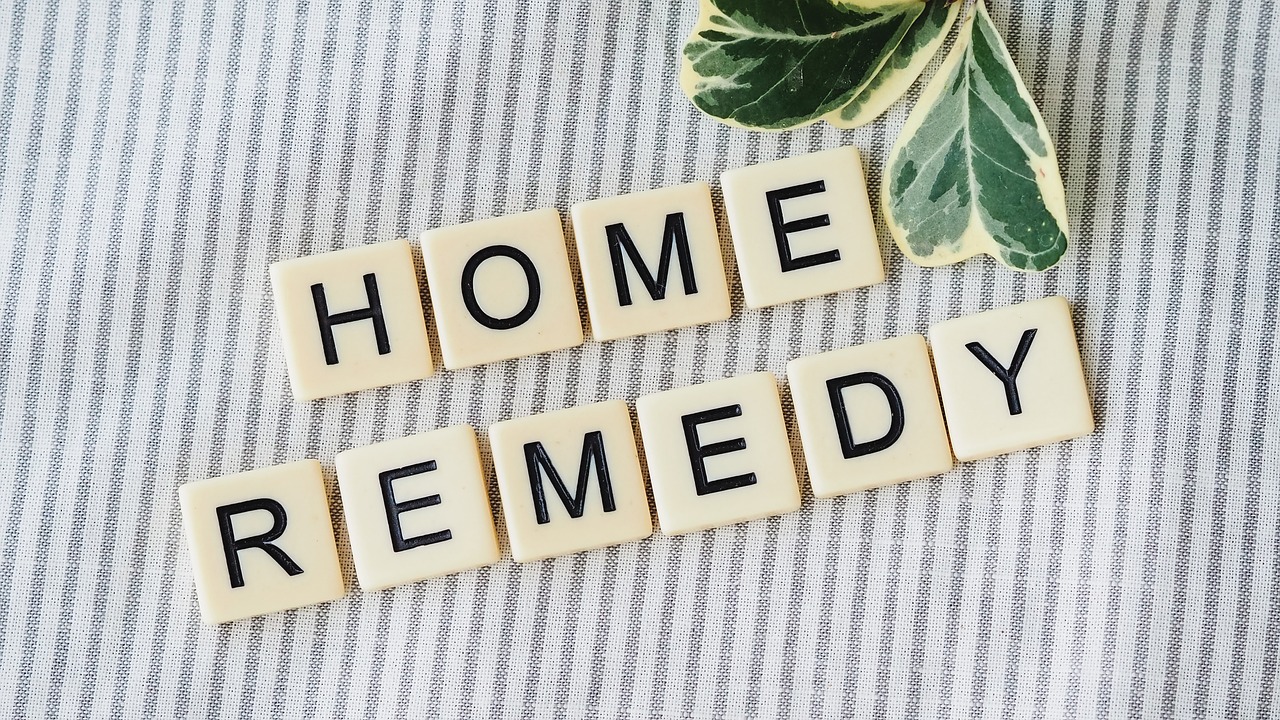
Home Escape Plans
Creating a home escape plan is not just a precaution; it’s a necessity for every household. When emergencies strike, whether it’s a fire, a natural disaster, or any unforeseen event, having a clear and practiced escape route can mean the difference between safety and danger. Imagine being in a situation where you need to evacuate quickly—would you know the fastest way out? This is where a well-thought-out escape plan comes into play.
First and foremost, you need to assess your home and identify all possible exits. This includes doors, windows, and any other escape routes. Consider your family’s unique needs; for instance, if you have small children or elderly members, ensure that the escape routes are accessible to everyone. You might even want to use a simple floor plan to mark these exits clearly. A visual representation can help everyone remember the best paths to safety.
Once you have identified the exits, it's crucial to think about potential obstacles that could hinder your escape. This could be furniture, locked doors, or even pets that might be in the way. Make a mental note of these challenges and plan accordingly. For example, keep hallways clear of clutter and ensure that doors can be opened easily in an emergency. You might even want to practice moving through your escape route during a family drill, which can help everyone feel more comfortable when the time comes.
Next, regular practice is key. Think of it like a fire drill at school; the more you practice, the more instinctive it becomes. Schedule regular family drills to ensure everyone is familiar with the escape plan. During these drills, you can simulate different scenarios, such as a fire in the kitchen or a power outage, to see how your family reacts and if any adjustments need to be made. It’s not just about knowing where to go; it’s about staying calm and collected in the face of panic.
Finally, consider creating a designated meeting point outside your home where everyone can gather after evacuating. This could be a neighbor’s house, a tree in the yard, or any safe location that everyone agrees upon. Having this meeting point helps ensure that everyone is accounted for and reduces the chaos that can ensue during an emergency. You can even create a small checklist that includes:
- Identify all exits in the home.
- Clear escape routes of obstacles.
- Practice escape routes regularly.
- Designate a meeting point outside.
In conclusion, a home escape plan is an essential part of emergency preparedness. By taking the time to create and practice this plan, you’re not just ensuring your family’s safety; you’re also instilling a sense of security and readiness that can be incredibly empowering. Remember, in an emergency, every second counts, and knowing exactly what to do can make all the difference.
Q: How often should we practice our home escape plan?
A: It's recommended to practice your escape plan at least twice a year. However, if there are changes in your household, such as new family members or renovations, practice more frequently.
Q: What should I do if someone in my family has mobility issues?
A: Ensure that all escape routes are accessible for individuals with mobility challenges. Consider designating a specific person to assist them during an emergency.
Q: How can I make my escape plan more effective?
A: Regularly review and update your escape plan based on any changes in your home or family. Incorporating feedback from practice drills can also enhance its effectiveness.
Q: Should I have multiple escape routes?
A: Yes! Having multiple escape routes ensures that if one path is blocked, you have alternatives to reach safety.

Designing an Escape Route
Designing an effective escape route is a critical component of any home emergency plan. Imagine being in a situation where every second counts; knowing the safest and quickest way out of your home can make all the difference. Start by identifying all possible exits in your home, including doors and windows. It’s essential to ensure that these exits are not blocked by furniture or other obstacles. In a moment of panic, you don’t want to be fumbling around trying to remove a barricade. Instead, a clear path can lead you and your family to safety without delay.
Next, consider the layout of your home. Each room should have at least two ways to exit. For example, if you’re in a bedroom, you should know how to get out through the door and, if necessary, through a window. This redundancy is crucial, as it provides alternatives if one route becomes inaccessible. Additionally, make sure that all family members, including children, understand the escape routes. You might even consider conducting a family meeting to walk through the plan together, ensuring everyone is on the same page.
When designing your escape route, think about the potential obstacles you might encounter. For instance, if you have pets, make sure everyone knows how to grab them quickly and safely during an evacuation. You can also use a map to visually mark the escape routes. Place this map in a central location, such as the refrigerator or a bulletin board, where everyone can easily refer to it. This visual aid can help reinforce the plan and make it easier to remember during an emergency.
Lastly, practice makes perfect! Regularly conducting drills can significantly improve your family's response time during an actual emergency. During these drills, encourage everyone to follow the escape routes and time how long it takes to get outside. This not only builds confidence but also highlights any areas that may need improvement. Remember, the goal is to create a sense of familiarity and comfort with the escape plan, so when the moment arrives, everyone acts swiftly and calmly.
- How often should we practice our escape plan? It's recommended to practice at least twice a year, ensuring everyone remembers the routes.
- What should we do if we encounter smoke while escaping? Stay low to the ground to avoid inhaling smoke and cover your mouth with a cloth if possible.
- Should we have a designated meeting point outside? Yes, choose a safe location away from the house where everyone can gather after escaping.
- What if we have multiple floors in our home? Ensure that each level has its own escape plan and that everyone knows how to use ladders or fire escapes if available.
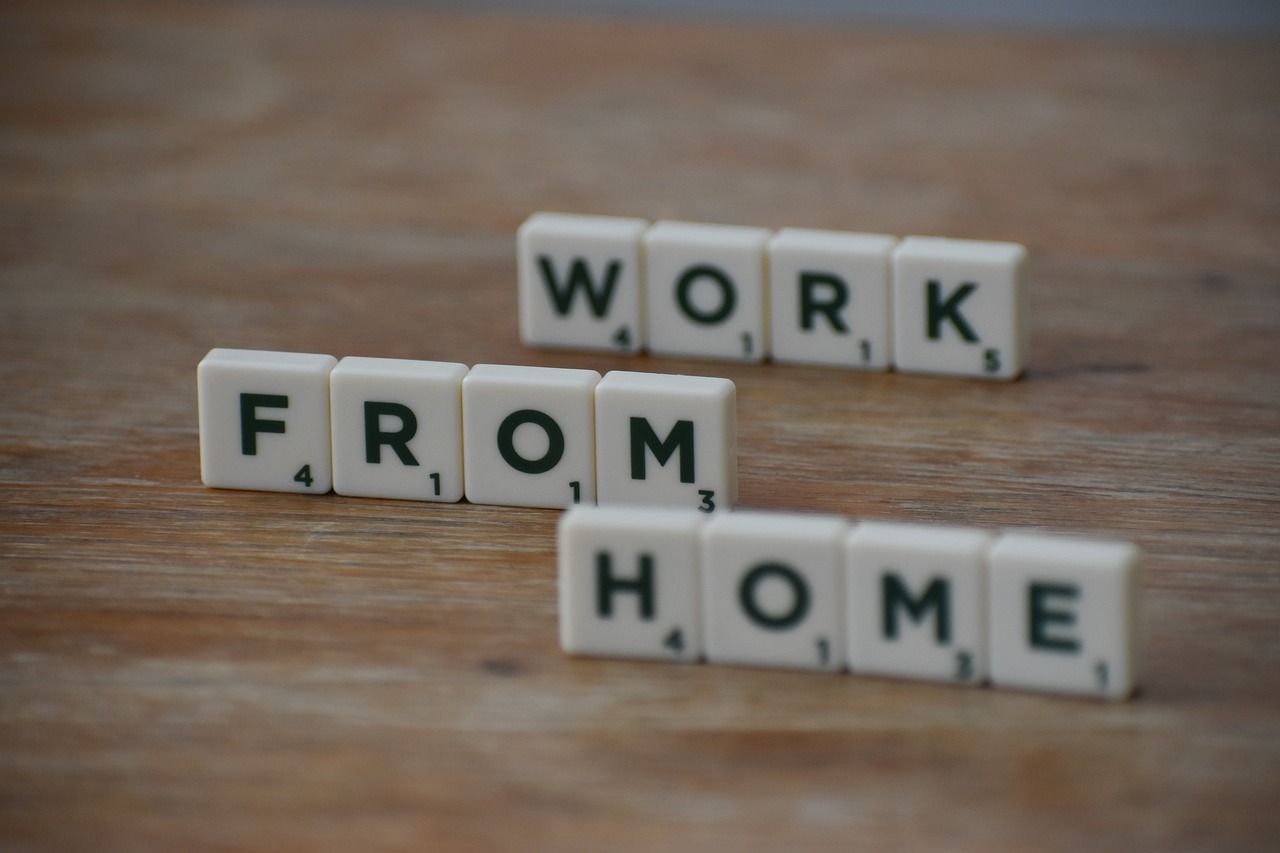
Practicing the Plan
Practicing your home escape plan is not just a good idea; it’s a vital step in ensuring the safety of your family during emergencies. Imagine the chaos that could ensue if a fire breaks out, and everyone is scrambling to remember the escape routes. By regularly rehearsing your escape plan, you can turn what could be a panic-filled situation into a well-coordinated response. It’s like a dress rehearsal for a play—everyone knows their lines and where to go!
When you practice, make sure to involve all family members, including children and pets. It’s important that everyone knows how to respond, regardless of their age. You might consider setting up a few different scenarios to keep things interesting and to prepare for various types of emergencies. For example, you might simulate a fire in the kitchen or a power outage at night. This way, everyone learns to adapt and respond appropriately, no matter the situation.
During your practice sessions, take note of any obstacles or challenges that arise. Are there toys left on the floor that could trip someone? Is there a piece of furniture blocking an exit? Addressing these issues during practice can make a significant difference when it counts. Make it a fun family activity—perhaps even turn it into a game! Reward everyone with a small treat after completing the drill to encourage participation and positivity.
Additionally, consider setting a reminder to practice your escape plan at least twice a year. This will help keep the procedures fresh in everyone’s mind. You could even use a calendar to mark the dates, ensuring that it becomes a routine part of your family’s safety measures. Remember, the goal is to make escaping your home as instinctive as possible, so that when the moment comes, everyone knows exactly what to do without hesitation.
In conclusion, practicing your home escape plan is a critical component of emergency preparedness. It’s not just about knowing the way out; it’s about creating a sense of security and confidence in your family. The more you practice, the more prepared you’ll be, and that’s a comforting thought for any household.
- How often should we practice our escape plan? It's recommended to practice at least twice a year to keep the plan fresh in everyone's mind.
- What should we include in our escape plan? Your plan should include multiple escape routes, a designated meeting place outside, and a way to communicate with each other.
- Can we make the practice fun? Absolutely! Turn it into a game and reward participants to keep everyone engaged.
- What if we have pets? Include your pets in the plan and practice how to safely get them out as well.
Frequently Asked Questions
- What type of fire extinguisher should I have in my home?
It's best to have a multi-purpose fire extinguisher, labeled as Class A, B, and C. This type can handle various types of fires, including those involving ordinary combustibles, flammable liquids, and electrical equipment.
- How often should I test my smoke detectors?
You should test your smoke detectors at least once a month. Additionally, replace the batteries at least once a year, and consider replacing the entire unit every 10 years to ensure optimal performance.
- Where should I place carbon monoxide detectors?
Carbon monoxide detectors should be installed outside each sleeping area and on every level of your home. This ensures that you receive an alert if dangerous levels of carbon monoxide are present while you sleep.
- What items should be included in a first aid kit?
A well-stocked first aid kit should include band-aids, antiseptic wipes, gauze pads, adhesive tape, scissors, tweezers, and pain relievers. Don't forget to include any personal medications or items specific to your family's needs!
- How can I ensure my emergency lighting is always ready?
Regularly check your emergency lighting equipment, replace batteries as needed, and store them in an easily accessible location. Consider using rechargeable lights for convenience, but ensure they are charged and ready to go!
- What are the benefits of using emergency blankets?
Emergency blankets are lightweight, compact, and provide excellent insulation. They can help retain body heat in cold situations or be used as a makeshift shelter. Their versatility makes them a must-have for any emergency kit.
- How do I choose the right home security system?
Consider your specific needs, such as whether you want a monitored system or a DIY option. Look into the types of sensors available, camera quality, and whether the system can be integrated with smart home devices for added convenience.
- What information should I include in my emergency contact list?
Your emergency contact list should include local authorities, family members, close friends, and any important medical contacts. Make sure to include phone numbers and addresses to ensure quick access during a crisis.
- How can I organize my emergency contact information?
Keep your emergency contact information in a simple, easy-to-read format. You can create a printed list and store it in a visible spot, like your fridge, and also save a digital copy on your phone for quick access.
- Why is it important to practice my home escape plan?
Practicing your home escape plan is crucial because it helps everyone in the household know exactly what to do in case of an emergency. Regular drills can reduce panic and confusion, making the evacuation process smoother and safer.






